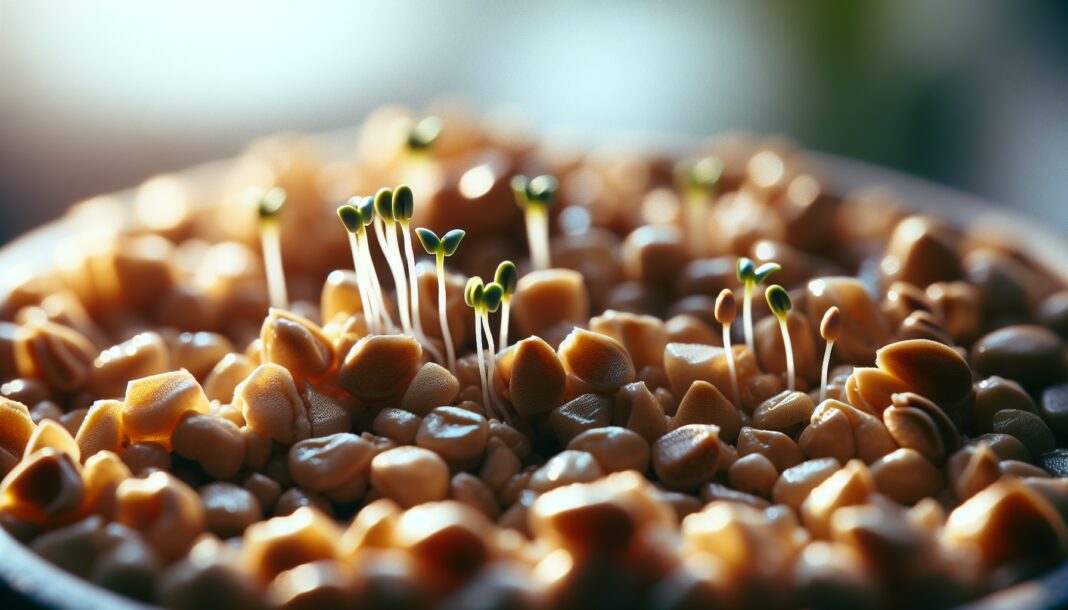Vermiculite germination is a reliable method for starting seeds in a moisture-rich, sterile medium. This lightweight mineral retains water efficiently, creating an ideal environment for strong, healthy seedlings. Unlike soil, vermiculite reduces the risk of fungal diseases and allows for optimal root development. Gardeners and commercial growers alike use it to improve germination rates and ensure seedlings get the best possible start. Understanding how to use vermiculite effectively can dramatically increase success when propagating plants.
What Is Vermiculite Germination and Why Use It?
Vermiculite germination stands out as a favorite in the gardening community. This method revolves around using vermiculite, a lightweight mineral, as a seed-starting medium. Discovering why vermiculite is highly regarded involves diving into its unique properties and the benefits it brings to the germination process.
Understanding Vermiculite as a Seed Starting Medium
Vermiculite, a naturally occurring mineral, expands when heated. Its ability to retain moisture and nutrients makes it ideal for seed starting. The expanded particles create an airy environment, essential for delicate seed roots. This environment facilitates oxygen availability, crucial for germination. Unlike soil, vermiculite remains consistent in texture, ensuring uniform growth conditions. Its sterile nature also minimizes the risk of disease, providing a clean slate for seedlings to thrive.
Benefits of Using Vermiculite for Germination
Several distinct advantages make vermiculite a preferred choice for germination. Firstly, its moisture retention capability reduces watering frequency, crucial for busy gardeners. It evenly distributes water, preventing dry patches that hinder growth. Additionally, vermiculite’s neutral pH supports various plant species, accommodating diverse gardening needs. Its lightweight nature eases handling, especially for indoor setups. By creating a stable environment, vermiculite encourages robust seedling development, leading to healthier plants.
How Vermiculite Improves Seedling Health and Growth
Seedlings started in vermiculite often exhibit remarkable vigor. The medium’s structure supports root expansion, crucial for nutrient uptake. With ample oxygen and moisture, seedlings establish quickly, reducing vulnerability to environmental stresses. Vermiculite also acts as an insulator, maintaining consistent temperatures around roots. This stability fosters a resilient root system, which translates to stronger plants. The nurturing environment provided by vermiculite sets the stage for a successful transition into mature growth phases.
How to Germinate Seeds Successfully in Vermiculite
Embarking on the journey of vermiculite germination requires understanding the right techniques. Selecting the appropriate grade and following a structured approach ensures optimal results. With careful attention to detail, seeds can thrive, turning into healthy seedlings ready for transplantation.
Choosing the Right Vermiculite Grade for Germination
Vermiculite comes in various grades, each suited for different applications. Coarse vermiculite offers excellent drainage, ideal for seeds requiring drier conditions. Fine vermiculite retains more moisture, perfect for seeds needing constant hydration. Selecting the appropriate grade hinges on understanding the seed’s specific needs. A balance between drainage and moisture retention ensures a conducive environment for germination. Consulting seed packets or expert advice can guide this decision, aligning the medium with seed requirements.
Step-by-Step Guide to Starting Seeds in Vermiculite
Starting seeds in vermiculite involves a simple yet effective process. Begin by filling a container with the chosen grade of vermiculite. Moisten it slightly, ensuring it’s damp but not soaking. Plant the seeds at the recommended depth, covering them lightly with additional vermiculite. Maintain consistent moisture by misting the surface, avoiding waterlogging. Place the container in a warm, well-lit area to encourage germination. Regularly check for signs of growth, ensuring the medium stays adequately moist.
Best Practices for Watering and Nutrient Management
Effective watering and nutrient management are vital in vermiculite germination. Vermiculite’s moisture-retaining ability reduces the need for frequent watering. However, monitoring moisture levels is crucial, especially in dry climates. Use a spray bottle for gentle watering, preventing seed displacement. Nutrient management begins once seedlings develop true leaves. Diluted, balanced fertilizers provide the necessary boost for continued growth. Regularly assess plant health, adjusting watering and nutrients as needed to maintain optimal conditions.
Common Mistakes and Troubleshooting Vermiculite Germination
Even with the best intentions, challenges can arise in vermiculite germination. Understanding common pitfalls prepares gardeners to tackle issues head-on. Identifying mistakes and implementing solutions ensures a smooth germination journey, leading to thriving seedlings.
Avoiding Overwatering and Poor Drainage Issues
Overwatering is a common error in vermiculite germination. While vermiculite retains moisture, excessive water leads to poor drainage and root rot. Monitoring moisture levels is essential, ensuring the medium remains damp but not saturated. Selecting the appropriate container with drainage holes prevents water buildup. If overwatering occurs, allowing the medium to dry before resuming watering helps recover the balance. Consistent checks and adjustments foster a healthy growing environment, safeguarding against water-related setbacks.
Preventing Mold and Fungal Diseases in Seedlings
Mold and fungal diseases pose threats to seedlings. High humidity and stagnant air contribute to these issues. Ensuring proper ventilation around seedlings reduces humidity levels, deterring fungal growth. Spacing containers adequately allows air circulation, minimizing disease spread. At times, using a fan can enhance airflow, creating an inhospitable environment for mold. Opting for sterile tools and containers helps maintain cleanliness. Recognizing early signs of disease enables prompt action, preserving seedling health.
When and How to Transplant Seedlings from Vermiculite
Transplanting is a critical step in a seedling’s life cycle. Timing it right ensures smooth adaptation to new environments. Typically, seedlings are ready when they have several true leaves and a strong root system. Gently remove them from vermiculite, taking care to preserve roots. Prepare the new planting site, ensuring it’s suitable for continued growth. Plant seedlings at the appropriate depth, firming the soil around them. Water thoroughly to settle them in. Monitoring their progress post-transplant ensures successful establishment in their new home.
Conclusion
Get Vermiculite is a lightweight mineral used as a seed-starting medium due to its moisture retention and aeration properties. It provides a sterile, disease-free environment that supports seed germination and early seedling development. Choosing the right vermiculite grade is essential, with coarse vermiculite offering better drainage and fine vermiculite retaining more moisture. Proper watering, ventilation, and nutrient management prevent overwatering, mold, and fungal diseases. Transplanting seedlings at the right stage with minimal root disturbance ensures successful growth in new environments.
FAQ
What are the benefits of using vermiculite for seed germination?
Vermiculite offers excellent aeration and moisture retention, creating an ideal environment for seed germination. It keeps seeds from drying out and provides necessary support for delicate roots. Additionally, vermiculite is sterile, reducing the risk of disease.
How does vermiculite help with moisture retention in seed starting?
This medium absorbs water like a sponge, holding moisture and nutrients close to seeds. This ensures a consistent supply of water, crucial for seedling development, and helps prevent fluctuations in moisture levels that can stress young plants.
Should I mix vermiculite with soil or use it alone for germination?
Vermiculite works effectively both alone and mixed with soil. For seeds that require high moisture, use vermiculite alone. Mixing it with soil provides a balance of moisture and nutrients for a broader range of plants.
What is the best vermiculite-to-soil ratio for starting seeds?
A 50:50 ratio of vermiculite to soil is generally recommended. This balance provides adequate moisture retention while ensuring proper drainage and aeration, which are crucial for healthy seedling growth.
Does vermiculite improve seed germination rates compared to other mediums?
Vermiculite significantly enhances germination rates due to its superior moisture retention and aeration properties. These features create optimal conditions for seed sprouting, often outperforming traditional soil or peat-based mixes.
Is vermiculite safe for organic gardening and seed starting?
Vermiculite is completely safe for organic gardening. It is a natural mineral and does not contain harmful chemicals. Its use aligns well with organic practices, supporting eco-friendly and sustainable gardening methods.



